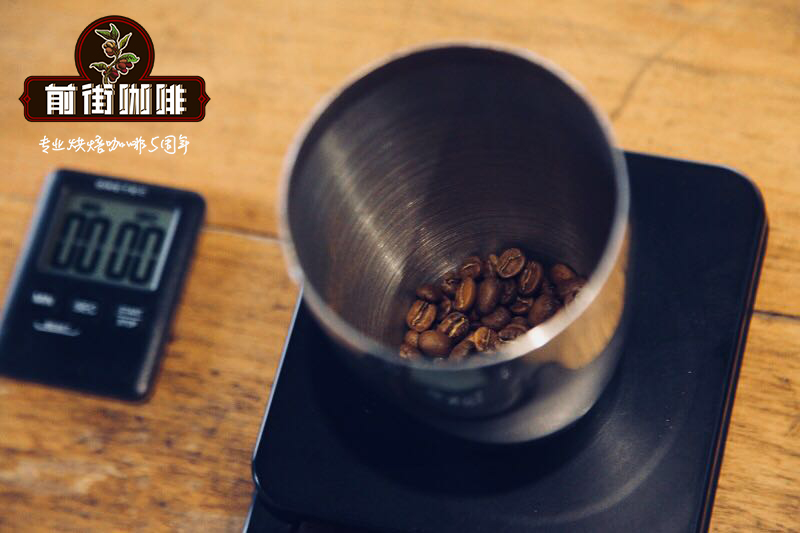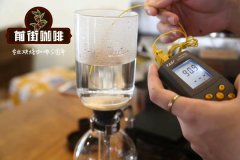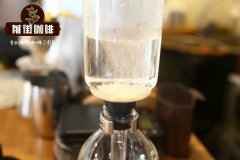Stir the coffee beans in the siphon pot several times _ the coffee beans most suitable for the siphon pot are recommended

Professional coffee knowledge exchange more coffee bean information please follow the coffee workshop (Wechat official account cafe_style)
Siphon pot (Syphon), commonly known as "plug wind pot" or "siphon", is a simple and easy-to-use method of coffee brewing, and it is also one of the most popular coffee brewing methods in cafes. Although the siphon pot coffee has the nickname of "plug wind", it has nothing to do with the siphon principle, but uses water heating to produce water vapor, causing thermal expansion and cold contraction, pushing the hot water from the lower sphere to the upper pot, and then sucking back the water from the upper pot after the lower pot cools. Doesn't that sound cool?
Siphon pot coffee principle:
There are also many people who like the precision of siphon pot coffee brewing with a little laboratory flavor. Watching the water rise as the water boils, the coffee extracted into black drops, step by step in the hands of the coffee maker. Using an Italian coffee machine often leaves part of the process to a machine, and siphon coffee seems to satisfy some people who like do-it-yourself DIY.
Today we present a tutorial on how to make a siphon pot of coffee.
Heat source: the heat sources that can be used to heat the hot water in the next pot are alcohol lamp, gas furnace and halogen lamp (commonly known as light wave furnace). The gas stove and the alcohol lamp are only partially heated, while the halogen lamp heats the pot in the way of surface heating, the stability of the halogen lamp is not easy to be affected by the environment and other factors, while the alcohol lamp is soft and weak, the disadvantage is that it is easily affected by wind and cold air.
Boil water: when we heat and boil water, we should be careful not to insert the upper pot prematurely, because the hot water in the lower pot can rise to the upper pot when it reaches about 65 degrees Celsius, so inserting the upper pot prematurely will cause the rising hot water temperature not enough to completely extract a cup of black coffee! We should first insert the pot diagonally, and then judge the insertion time of the upper pot by observing the amount of bubbles in the sudden boiling chain device (because the timing of insertion is critical). When there are three consecutive bubbles in the lower pot is the best time to insert the upper pot!
Brewing: 1. After inserting into the upper pot, the hot water in the lower pot rises to the upper pot due to hot expansion and cold shrinkage, and when the water rises, turn the firepower down (halogen lamp needs to gently pull the alcohol lamp to the side, but not the gas stove). Because the hot water in the lower pot will be a little unstable when the bubble is up, and the waiting time for powder pouring is about 5 seconds when the bubble is more stable.
two。 Pour in the freshly ground coffee powder and gently press the powder down with a stirring stick. Do not push too hard so that the coffee powder is in full contact with water. The OK (usually called steaming) time is 15 to 20 seconds and the first stirring begins (the oblique insertion depth of the stirring stick is 3 to 4cm).
3. The first stirring is to extract the coffee oil and the front flavor, and try to finish the stirring within 5 seconds. After the first stirring, the coffee in the pot begins to be delaminated in turn: oil-coffee powder-coffee liquid. When there is a lot of oil, it means that the first stirring is successful (the first stirring is 10 seconds), and then the second stirring begins.
4. The second stirring is to release the gas produced by the coffee beans during brewing and dissolve the coffee ingredients in hot water. The second stirring should be reduced in strength and number of laps compared with the first stirring, and after the second stirring, it will be found that the coffee oil on the topmost layer is also relatively white compared with the dense color that will change at the first time. When this happens, the third stirring should not be too much stirring and easy to over-extract (the second stirring time is 10 seconds).
5. Turn off the heat before the third stirring, and then gently stir 3 to 4 times. When the stirring is finished, wipe the next pot with a wet towel so that the temperature drops and the pressure drops. Suck the coffee liquid into the next pot. (another reason why the last stirring is not suitable for too much stirring is that the hot water in the pot will become very high at this time, and too much stirring will easily extract the bitter taste.) A cup of coffee will be brewed.
Extraction time: stew 15 to 20 seconds-the first stir 10 seconds-the second stir 10 seconds-the third stir 10 seconds! The extraction time is less than one minute.
The mode of mixing is as shown in the picture:
Take the stirring rod as the axis, use the thumb, index finger, middle finger, pinch the stirring rod. Stir clockwise, using the flat part of the end of the mixing bar to mix the coffee powder floating on the water into the water, stirring with fingers bending as the main wrist as the auxiliary, hand-held parts as the fulcrum, holding the bamboo mixing stick to draw a circle, quickly complete the mixing.
END
Important Notice :
前街咖啡 FrontStreet Coffee has moved to new addredd:
FrontStreet Coffee Address: 315,Donghua East Road,GuangZhou
Tel:020 38364473
- Prev

How to make siphon pot coffee_siphon pot suitable for coffee beans what recommendations
Professional coffee knowledge exchange More coffee bean information Please pay attention to coffee workshop (Weixin Official Accounts cafe_style) Using siphon pot to brew coffee is a test of technology, with strict requirements on time and water temperature. Just as there are several kinds of coffee stirring in siphon pots, there are also special ways to throw powder in siphon pots. The more common ones are to throw powder first and then throw powder
- Next

30 points for attention in siphon pot coffee brewing. What kind of coffee beans are suitable for siphon pot?
Professional coffee knowledge exchange more coffee bean information Please follow the coffee workshop (Wechat official account cafe_style) siphon pot a coffee pot with the taste of experimental utensils and fun to use, making a cup of coffee is as exciting and exciting as doing a chemical experiment. For some coffee beans with unique flavor and suitable for a single product, cooking in a siphon pot can show more distinctive style.
Related
- What is the Philharmonic pressure? How to use Philharmonic pressure to make delicious coffee
- Why does a hand grinder have more fine powder than an electric grinder?
- In addition to the hot mom, what is the difference between the versions of EK43 | ditting and Mahdi ek43?
- What kind of equipment do you need to make coffee by hand? Introduction to novice starter cooking equipment tools
- Espresso needs to be ground how thick and thin scale entry Italian Coffee Machine Bean Grinder investigation and Grinding course
- How much does it cost to open a small private cafe? How much does it cost to learn coffee? How to operate it?
- The difference between the flavor characteristics of hand-brewed coffee and coffee maker is hand-brewed coffee really better than coffee maker? Can I use a coffee machine to make coffee beans by hand?
- The difference between 01 and 02 of hario v60 filter cup what is the difference between 01 and 02 filter cup opening and cooking flavor
- What's the difference between the smart cup and the French kettle? Which is better, the French kettle or the Smart Cup?
- What's the difference between a smart cup and a V60 filter cup? The difference between the taste of smart cup and hand-brewed coffee

